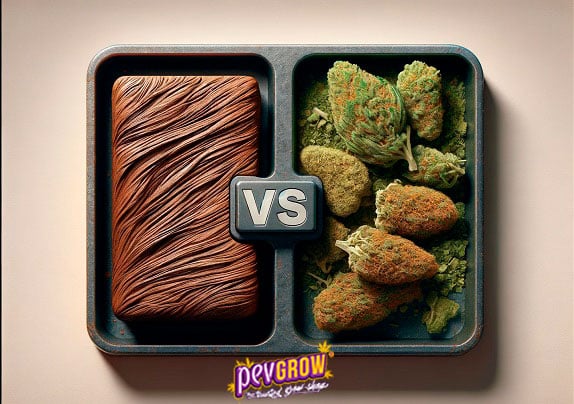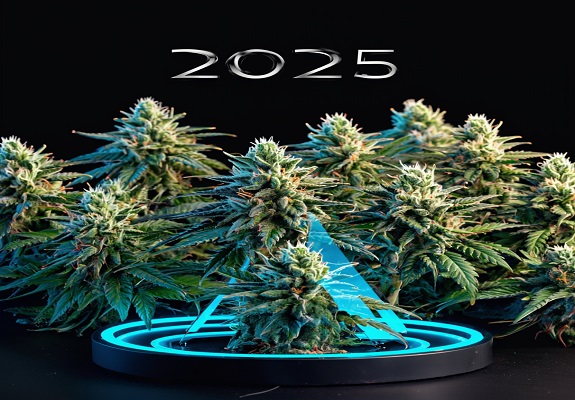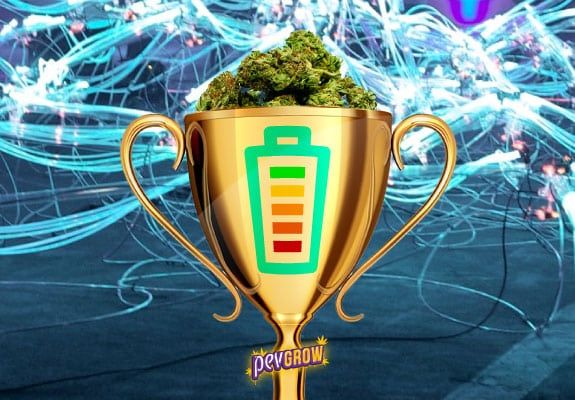- Marijuana and hashish, though derived from the same plant, have key differences: hashish is made from concentrated resin, resulting in higher potency and an intense flavor, whereas marijuana includes the dried flowers, offering a variety of flavors and milder effects. These differences influence their appearance, consumption methods, and sensory experiences.
- – The best hash in the world, all different types
- – How to make homemade Moroccan hash


In constant struggle for the regulation of cannabis, mainly in the medicinal field.
28-02-2024 09:00:00 - Updated: 28 February, 2024
In the world of cannabis, two of the most popular and often confused forms are hashish and marijuana. Although both come from the same plant, their differences are significant in terms of composition, effects, and uses. In this article, we will break down these differences to provide a clear and detailed understanding. If you are more of a marijuana person than a hashish person, but are not clear about the best varieties for you, take a look at this other article where we explain the differences between sativas and indicas.
Hashish vs Marijuana
| Characteristic | Hashish | Marijuana |
|---|---|---|
| Origin | Concentrated resin of the cannabis plant. | Dried flowers and leaves of the cannabis plant. |
| Composition | High concentration of THC and cannabinoids. | Lower concentration of THC, retains more terpenes. |
| Appearance | Blocks or balls, dark brown color. | Dry buds, greens with varying hues. |
| Texture | From malleable to hard and brittle. | Dry, can be fluffy or dense. |
| Flavor | Intense and deep, sometimes altered by oxidation. | More varied and nuanced, depends on the strain. |
| Methods of Consumption | Smoked, vaporized, in food/beverages. | Smoked, vaporized, in food/beverages. |
| Effects | More intense and lasting, sedative. | Milder and gradual, varied according to the strain. |
| Potency | Generally more potent. | Less potent, more moderate effects. |
Origin and Composition
Visually, hashish and marijuana are easily distinguishable. Hashish is usually presented in blocks or balls of dark brown color, with a texture that can vary from soft and malleable to hard and brittle. Marijuana, on the other hand, is characterized by its dry and often showy buds.
Hashish:
The hashish, also known as hash, originates from the collection of the resin of the cannabis plant. This resin contains trichomes, which are small glands rich in cannabinoids like THC and CBD. The process of creating hashish involves separating these trichomes from the flowers and leaves of the plant, which can be done in various ways, such as sieving, filtering with extraction bags, or with pressure. Once collected, the resin is pressed and heated to form blocks or balls. This extraction technique concentrates the cannabinoids, resulting in a high-potency product. Hashish has been used for centuries, with historical records dating back to its use in regions such as Central Asia and the Middle East.
Marijuana:
Marijuana, on the other hand, refers to the dried parts of the cannabis plant, specifically the flowers or buds. These flowers also contain trichomes, but in a lower concentration compared to the pure resin used for hashish. Marijuana is harvested, dried, and cured before being consumed, which allows its flavor, aroma, and potency to develop. Unlike hashish, marijuana retains more of the plant’s natural terpenes, which contribute to its aromatic properties and can influence the perceived effects. Its use is known since ancient times, being used for recreational and medicinal purposes in various cultures around the world.
Appearance Differences of Hashish and Marijuana
Hashish Appearance:
Hashish typically comes in a variety of shapes and textures, which depend on its method of production and origin. In general, it has a color that ranges from light brown to black, although sometimes it is blond or light. Its texture can be soft and malleable, similar to clay, in the case of hand-made hashish or gently pressed. On the other hand, mechanically pressed hashish tends to be harder and denser. Some varieties of hashish, especially those produced by modern extraction methods, may have an almost crystalline or powdery consistency. These differences in the appearance of hashish not only indicate its method of production but also the quality and purity of the product.
Marijuana Appearance:
Marijuana, in contrast, consists of the dry buds of the cannabis plant. These buds vary in size, shape, and color, from light greens to darker shades with touches of purple, blue, or even orange, depending on the strain. Marijuana buds are covered by a kind of crystalline fuzz, which are the trichomes where cannabinoids and terpenes reside. These buds can be fluffy or dense and compact. Marijuana may also include small leaves that surround the buds, which often have a layer of trichomes that gives them a frosted appearance.
Consumption Methods of Hashish and Marijuana
Hashish Consumption Methods:
Hashish, due to its concentrated consistency and high potency, can be consumed in several ways. A common way is to smoke it, either alone or mixed with tobacco, in hand-rolled cigarettes or in pipes and bongs. In some cases, it is crumbled or slightly heated to facilitate its mixing with other materials. Additionally, hashish can be vaporized in specific devices that allow heating the product without burning it, releasing its active compounds more efficiently. Another popular way, especially in Middle Eastern and Asian cultures, is its inclusion in food or beverages, taking advantage of its solubility in fats to make infusions or edibles.
Marijuana Consumption Methods:
Marijuana, for its part, is commonly consumed smoking in cigarettes with rolling paper, known as joints, pipes, or bongs. These methods allow enjoying the characteristic aroma and flavor of the different types of marijuana. In addition, vaporization is also a popular option, as it allows inhaling the cannabinoids without the byproducts of combustion. As for edibles, marijuana can also be incorporated into a variety of foods, although it requires a prior process of decarboxylation to activate the cannabinoids. This process often involves baking the dry buds before incorporating them into edible recipes.
Hashish Vs Marijuana: Flavor Differences
Hashish Flavor:
Hashish stands out for its intense and deep flavor, a direct consequence of the concentration of terpenes and other aromatic compounds during its manufacturing process. When pressing the resin to form hashish, some terpenes may oxidize, which subtly modifies its flavor profile. This process can also result in the loss of some more volatile terpenes, altering the final flavor compared to the original plant. However, in many cases, the flavor of hashish remains a reflection of the marijuana from which it was derived, only much more intense and prolonged. This intensity can vary depending on the extraction method and the specific characteristics of the cannabis plant used.
Marijuana Flavor:
On the other hand, marijuana tends to have a more varied and nuanced flavor due to the preservation of a wider range of terpenes during its drying and curing process. These terpenes not only provide different aromas but also influence the perception of flavor. Different strains of marijuana can present flavors ranging from citrus and fruity to earthy and woody. The flavor of marijuana can also be influenced by factors such as climate, nutrition, and the soil in which it was grown, as well as by cultivation techniques.
Effects and Potency of Hashish and Marijuana
Hashish Effects and Potency:
Hashish is notably potent due to its high concentration of THC and other cannabinoids. This high concentration translates into more intense and rapid effects compared to marijuana. Users often describe a more sedative or relaxing effect, which may be accompanied by a feeling of euphoria. Moreover, due to its potency, hashish can have longer-lasting effects. It is important to note that due to this high concentration of THC, hashish can be overwhelming for novice users or those not accustomed to high levels of this substance. The effects vary according to the dose and individual tolerance, but may include perceptual alterations, creativity enhancements, and in some cases, anxiety or paranoia, especially in high doses.
Marijuana Effects and Potency:
Marijuana, having a lower concentration of THC compared to hashish, tends to produce milder and more gradual effects. These effects include relaxation, general well-being, and euphoria, but are generally less intense than those of hashish. In addition, marijuana retains a wider range of terpenes and other cannabinoids, which can result in a more balanced experience and with less risk of intense adverse effects. The specific profile of cannabinoids and terpenes varies according to the strain, which means that different types of marijuana can induce different sensations, from stimulating to relaxing.
Conclusions:
Understanding the differences between hashish and marijuana is crucial for any cannabis consumer. While hashish offers a more concentrated and potent experience, marijuana allows the enjoyment of the plant’s natural flavor and aroma. The choice between one and the other will depend on personal preferences and the desired effects. Now that you have a clear understanding of the differences between weed and hash, I advise you to read this other article that explains how to smoke hash in the best way.
FAQs:
- Is hashish stronger than marijuana?
A: Yes, hashish is generally more potent due to its higher concentration of THC and other cannabinoids. - Can I consume hashish in the same way as marijuana?
A: Although both can be smoked, hashish dissolves easily and is often mixed into edibles or beverages, which is not as common with marijuana. - How does the difference in composition affect the effects?
A: The higher concentration of cannabinoids in hashish usually results in more intense and lasting effects, while marijuana offers a milder and less intense experience.





